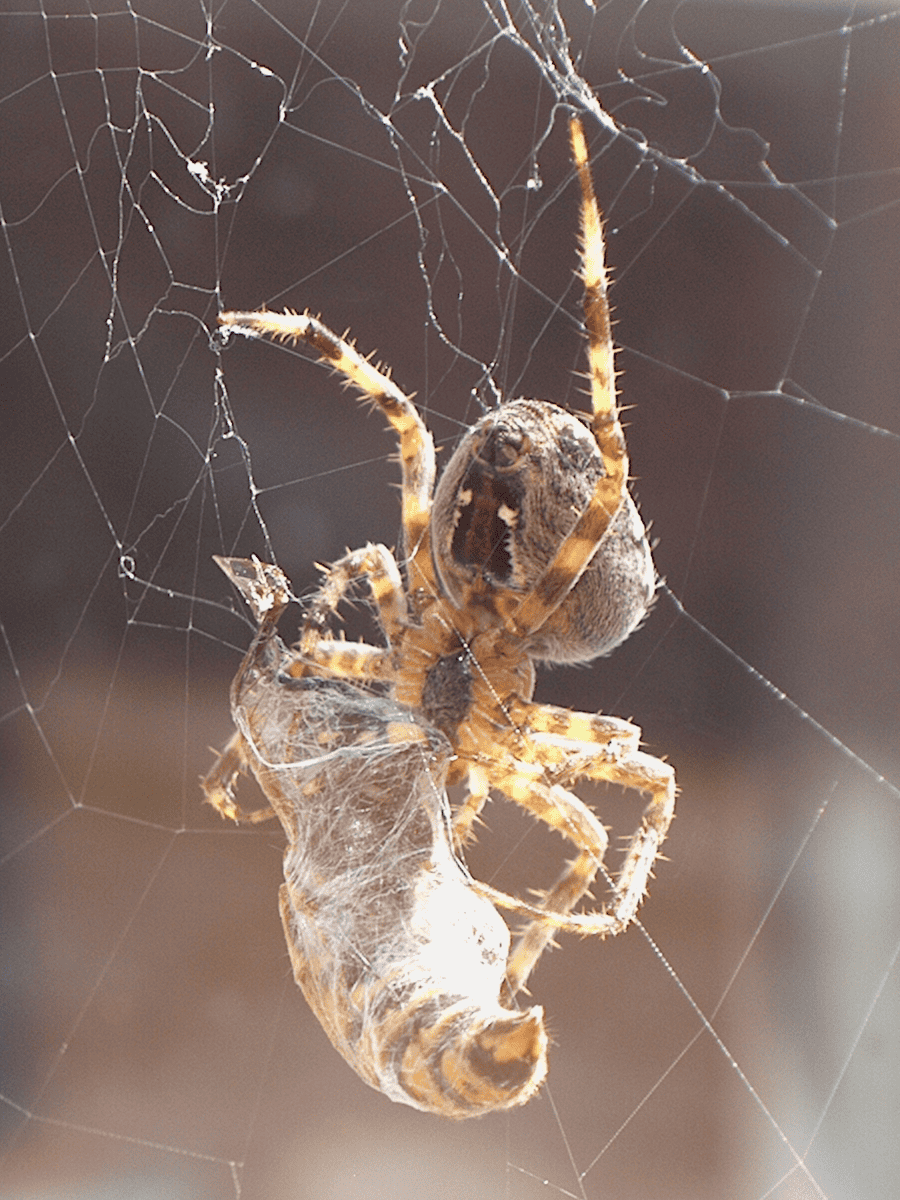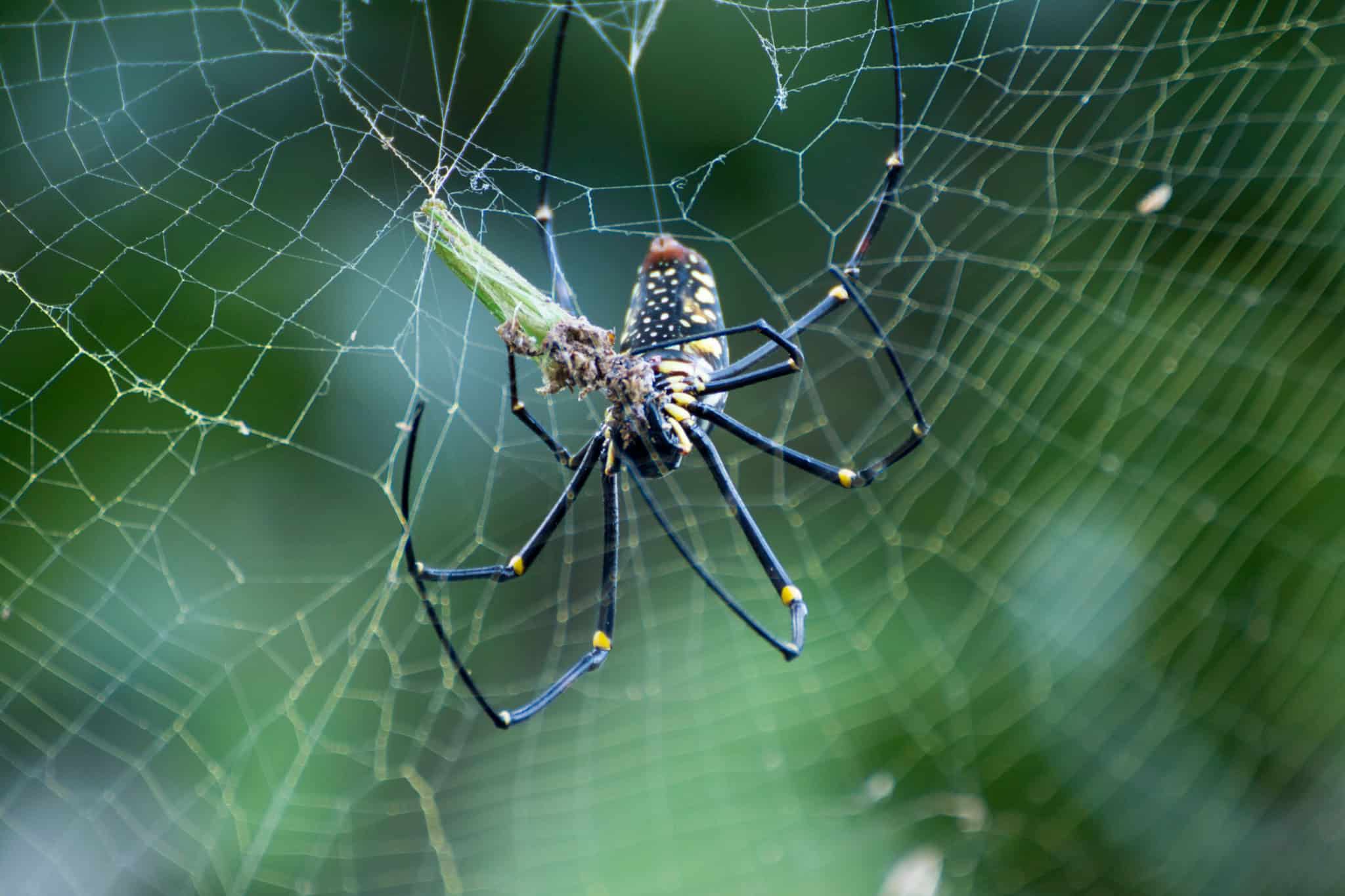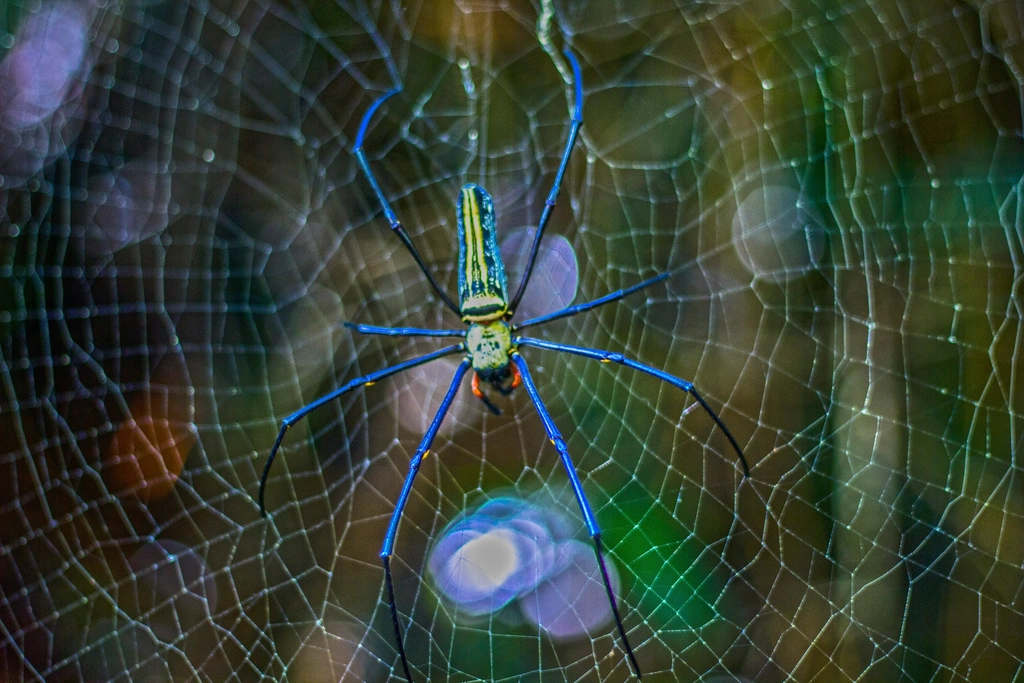Have you ever wondered if spiders are more than just creepy crawlies lurking in the corners? What if these eight-legged creatures were more intelligent than we ever imagined? It might sound shocking, but beneath their tiny exteriors, some spiders display behaviors so clever they could rival those of much bigger animals. From using tools to performing mind-blowing problem-solving feats, these arachnids are anything but simple. Get ready to meet 14 spiders that will completely change the way you look at their webby world!
14 Portia Jumping Spider Outsmarts Its Prey

Portia jumping spiders are often hailed as the geniuses of the arachnid world. These tiny hunters use complex strategies to outwit their prey, sometimes even pretending to be caught in another spider’s web. Portia spiders don’t just rush in; they pause, observe, and plan, making calculated moves to get what they want. In fact, they can learn from their mistakes and adapt their tactics if their first strategy fails. Scientists have even compared their hunting methods to those of cats, showing how remarkably advanced their brains are. Watching a Portia spider hunt is like witnessing a miniature chess match. Their patience and cunning are nothing short of inspiring.
13 Bagheera Kiplingi Masters Plant-Based Diet

Bagheera kiplingi is a jumping spider that breaks the mold by eating mostly plants, specifically acacia buds, rather than insects. This unique dietary choice shows an impressive level of adaptability and intelligence. Instead of relying solely on predatory instincts, Bagheera kiplingi must carefully navigate ant-guarded plants to reach its food. It learns the patterns of the ants and avoids them, demonstrating a keen sense of timing and observation. This spider is quick to adjust its feeding behavior based on the situation, which is rare among spiders. Its smarts allow it to survive in an environment where most others would fail. The Bagheera kiplingi is a true innovator in the spider world.
12 Ogre-Faced Spider Wields Its Web Like a Net

The ogre-faced spider, also known as the net-casting spider, uses a unique hunting method that showcases its problem-solving skills. Instead of spinning a typical web, it creates a small, stretchy net that it hurls over passing insects with lightning speed. This requires an understanding of timing, distance, and accuracy. The spider even “aims” its net in total darkness, relying on special vision and memory. Its ability to recalculate quickly if it misses a catch is evidence of its quick thinking. The ogre-faced spider’s hunting technique is a testament to the creative intelligence found in nature. Watching it in action is like seeing a tiny ninja at work.
11 Golden Silk Orb-Weaver Engineers Giant Webs

Golden silk orb-weavers are famous for building massive, intricate webs that can span several feet. Creating these structures requires more than just instinct; it demands architectural planning and execution. The spider must select the right location, calculate distances, and adjust its web design based on environmental factors like wind and prey availability. These spiders also repair and reinforce their webs, showing an ongoing awareness of their construction. Their silk is not only beautiful but also incredibly strong, sometimes used by humans in textiles. The golden silk orb-weaver’s web-building skills are a clear sign of its impressive intelligence and adaptability. Each web is a masterpiece of both function and beauty.
10 Ant-Mimicking Spider Uses Disguise and Deception

Ant-mimicking spiders have evolved to look and act like ants, fooling both predators and prey. This requires sophisticated behavior, as these spiders must mimic the way ants walk, move their antennae, and even interact with other ants. By blending in, they avoid being eaten and can sneak up on their own prey. Some ant-mimicking spiders have learned to live alongside real ants, picking up cues from their hosts to further improve their disguise. This level of mimicry is not just about appearance but about understanding and adapting to the social life of another species. The ant-mimicking spider’s life is a daily performance of wit and survival.
9 Social Spiders Cooperate for Success

Most spiders are loners, but certain species are surprisingly social, living in large colonies and working together to build webs and hunt. These social spiders communicate through vibrations and chemical signals, coordinating their actions for the good of the group. They share food, care for each other’s young, and defend the colony against threats. This cooperation requires a level of intelligence rarely seen among arachnids. Social spiders can even recognize members of their own group and adjust their behavior when strangers arrive. Their teamwork is a powerful reminder that intelligence can thrive in even the smallest of creatures.
8 Trapdoor Spider Designs Clever Hideouts

Trapdoor spiders are brilliant architects, crafting burrows with hidden doors made from silk and soil. These doors blend seamlessly into the environment, making the spider’s home almost invisible to predators and prey. The spider waits patiently just beneath the trapdoor, sensing vibrations that signal an approaching insect. With lightning speed, it bursts out, grabs its meal, and retreats back underground. This hunting method requires precise engineering and an understanding of camouflage. Trapdoor spiders are also known to modify their homes based on environmental changes, showing adaptability and foresight. Their hidden lairs are a testament to their stealth and intelligence.
7 Darwin’s Bark Spider Weaves Record-Breaking Webs

Darwin’s bark spider holds the world record for spinning the largest webs, some stretching across entire rivers. Constructing such a massive web is no easy feat; it requires planning, strength, and problem-solving. The spider must find suitable anchor points, often far apart, and judge the distances with remarkable accuracy. Its silk is incredibly tough, stronger than steel by weight, and the spider uses it sparingly to maximize efficiency. Darwin’s bark spider repairs and maintains its web, demonstrating ongoing attention and care. The sheer scale and complexity of its webs are clear evidence of this spider’s extraordinary intelligence.
6 Peacock Spider Performs Dazzling Courtship Dances

Peacock spiders have become internet sensations thanks to their colorful displays and intricate courtship dances. Males wave their legs, vibrate their abdomens, and show off their brilliant patterns to attract females. These performances require memory, timing, and creative expression. Each dance must be just right, or the female may lose interest—or worse, attack the male. Peacock spiders also adjust their moves depending on the female’s reactions, showing flexibility and responsiveness. Their dances are not only beautiful but also a sign of cognitive complexity. Watching a peacock spider in action is like attending a miniature ballet.
5 Spitting Spider Calculates Trajectory for Attack

Spitting spiders have a unique way of capturing prey: they eject a sticky, venomous silk at their target, pinning it in place. This attack requires precise calculation of distance, angle, and speed. The spider must anticipate the movements of its prey and adjust its aim accordingly. Scientists have observed that spitting spiders sometimes practice their technique, improving accuracy over time. This learning behavior sets them apart from other spiders that rely solely on instinct. The spitting spider’s ability to coordinate its attack so perfectly is nothing short of astonishing. It’s a true marksman among arachnids.
4 Lynx Spider Stalks Like a Silent Hunter

Lynx spiders are agile hunters that stalk insects across leaves and flowers, choosing the perfect moment to strike. Unlike web-builders, they rely on their keen eyesight and quick reflexes. These spiders can learn from experience, remembering where prey is most likely to appear. Some lynx spiders are even known to cooperate with others during hunts, a rare behavior for solitary species. Their ability to adapt their strategy based on their environment and recent experiences shows a sharp mind at work. Lynx spiders are like tiny jungle cats, blending patience, agility, and intelligence to survive.
3 Crab Spider Masters the Art of Ambush

Crab spiders are experts at camouflage, waiting perfectly still on flowers or leaves until unsuspecting prey comes close. Instead of building webs, they use their color-changing abilities to blend into their surroundings, becoming almost invisible. When the moment is right, they strike with speed and precision. Crab spiders often choose the best hunting spots, showing an understanding of where insects are likely to land. Some have even been observed moving to new locations if hunting is poor. Their flexible hunting style and use of camouflage are clear signs of smart, adaptive thinking.
2 Argyrodes Steals from Other Spiders with Stealth

Argyrodes spiders, also known as “kleptoparasitic” spiders, have developed a sneaky way to survive: they steal food from the webs of larger spiders. These clever thieves know how to move quietly and sense when the web’s owner is distracted. If caught, they can escape quickly, using their small size and agility. Some Argyrodes spiders even mimic the vibrations of insects trapped in the web to fool the host spider. Their life is a constant game of risk and reward, requiring quick thinking and careful planning. Argyrodes spiders are true masters of stealth and deception.
1 Australian Social Huntsman Works in Groups

The Australian social huntsman spider is one of the few species that not only tolerates company but thrives on it. These spiders live in groups, cooperating to hunt, raise young, and defend their territory. They communicate using vibrations and touch, coordinating their movements much like a wolf pack. The group structure allows them to take down larger prey and survive in harsh environments. Young spiders learn from older ones, picking up hunting and survival skills through observation. This level of social learning and teamwork is rare in spiders, making the Australian social huntsman a standout example of arachnid intelligence.
Conclusion

Spiders continue to surprise us with their inventiveness, adaptability, and cunning. Their world is filled with clever strategies and behaviors that reveal a hidden intelligence, challenging everything we thought we knew. Next time you spot a spider, remember—there might be a tiny genius weaving its way through the shadows. Did you expect spiders to be this smart?
- 14 Spiders That Are Surprisingly Smart - August 14, 2025
- 10 Myths About Cheetahs Busted by Science - August 14, 2025
- 10 Hiking Trails with Most Mountain Lion Sightings in the United States - August 14, 2025

